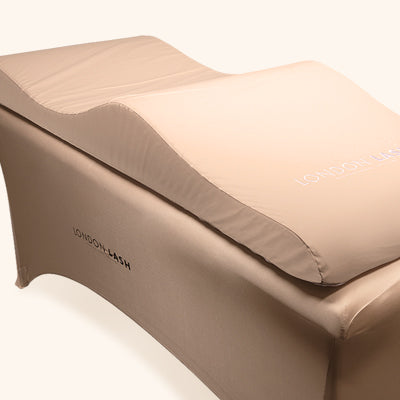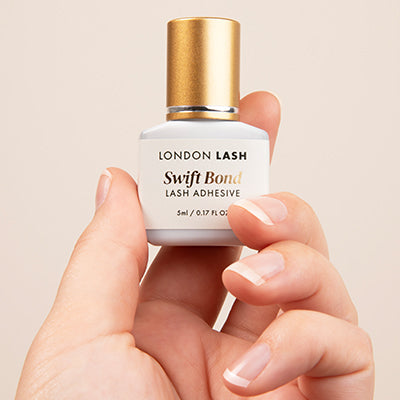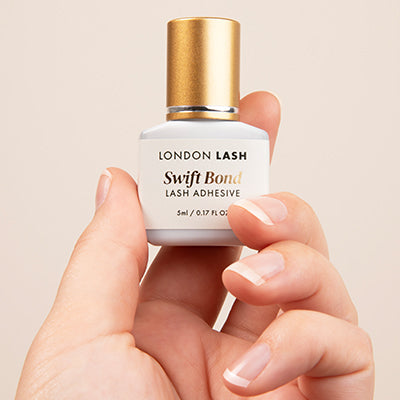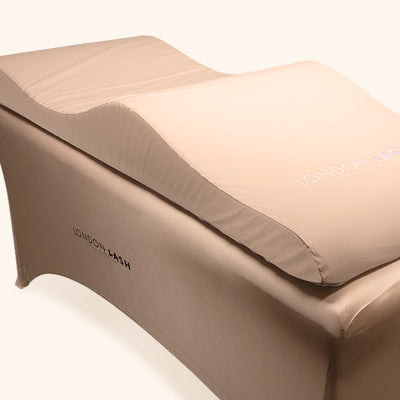FREE STANDARD SHIPPING FOR ORDERS OVER $99!
FREE STANDARD SHIPPING FOR ORDERS OVER $99!
Glues & Liquids
Lashes
Ebooks

Common Gel Nail Problems
June 08, 2023 4 min read
Common Gel Nail Problems and How You Can Solve Them
There is a specific art to gel nails, and like with anything, there are a few things that can go wrong. Sometimes it’s difficult to work out the problem and then find a solution, particularly when there’s a whole host of things it could be. Let’s have a look at troubleshooting some of the most common gel nail problems, and how you can go about resolving them!

Peeling and Air Pockets
Peeling nails or air pockets can be from a number of different issues, however, the most common problem is the preparation of the nails or lack thereof! Nail prep is often overlooked or fast-tracked when it should arguably be the longest section of the nail appointment!
The best way to improve the retention of your gel nails and stop that pesky peeling is to be very thorough when buffing or filing the nail. You are not finished prepping the nail until ALL the shine has been removed, meaning there is no natural oil left on the nail. The surface should be completely matte which will allow your base coat to properly adhere. Remember, being thorough does not mean being rough! You should always be extremely gentle when buffing natural nails and always use the nail file in one direction to ensure there is no heat build-up from friction.
Another important part of nail preparation is dehydration. Use a primer or dehydrator such as Miss Dolla pH bond to remove any remnants of moisture or oil before applying any gel polish.
Something to watch out for is any remaining cuticle on the nail plate as this can also cause air pockets to form. The gel nail polish cannot properly stick to cuticles which is why we remove them, so when completing this step of the nail prep routine, be sure to remove all of the dead skin.
If you have been thorough with your nail preparation and don’t find it to be an issue with other clients, it could well be something that a particular client is doing. This could be picking at their nails or trying to get rid of something that’s bothering them which will disrupt the adhesion and result in the gel lifting of the nail or air making its way between the gel polish and the nail.
Nail Damage
Damaged nails make your life much more difficult as a nail tech, and it’s a problem we see a lot. Whether your client has damaged nails from previous services or has peeled their gel nails off themselves, nail damage is very common and it’s something that you need to be aware of when it comes to retention.
Damaged nails can have an uneven surface making it extremely hard for the gel to stick to the nail. It can also result in a manicure that isn’t smooth, and who wants that?! Weak nail structure can also cause the nails to be brittle or soft making them prone to breakage. Gel polish adds a weight that damaged nails will be unable to support resulting in added stress to the nails and creating the dreaded gel nail damage!
If a client’s natural nails are damaged to the point where they are peeling, then it is highly likely that they will experience their gel polish peeling too as the bond between the nail and the gel is weak. This will lead to premature lifting and an unhappy client! Brittle nails can also snap entirely which will most definitely ruin their gel manicure. If you notice that a customer’s nails are damaged to the point that their treatment or results will be compromised, it’s always best to send them away with a nail oil and let their nails heal before booking back in at a later date.
Uncured Gel
Have you ever noticed that your clients' nails are smudging after they’ve been cured or they seem squishy? Your client may also find that when they go home, a layer of their gel polish peels off revealing a wet layer. All of these scenarios come from under-cured gel.
This can sometimes be a little bit deceiving as if the top layer is fully cured, you won’t notice it straight away. It may also become apparent within a few days if the gel polish starts peeling.
Uncured gel can be a result of either not enough time in the lamp, gel nail polish that is past its shelf life OR an old lamp that no longer works properly. We always check the manufacturer's instructions on how long that particular product needs curing for. Bear in mind this will be different depending on the type of product used; for example, builder gel or built-up Rubber Base will require a longer curing time. Also take note of whether you are using a UV or LED lamp, as this will affect the length of time required for the gel to cure due to LED lamps being stronger and faster.

Hopefully, we’ve helped you troubleshoot some of your gel nail problems. Once you get to the root of the issue, they’re pretty easy to solve so don’t worry! If you have any more questions or have a problem we haven’t covered, just send us a DM on @Miss_dolla_nails.
Check out these featured products
Subscribe
Sign up to get the latest on sales, new releases and more …
















